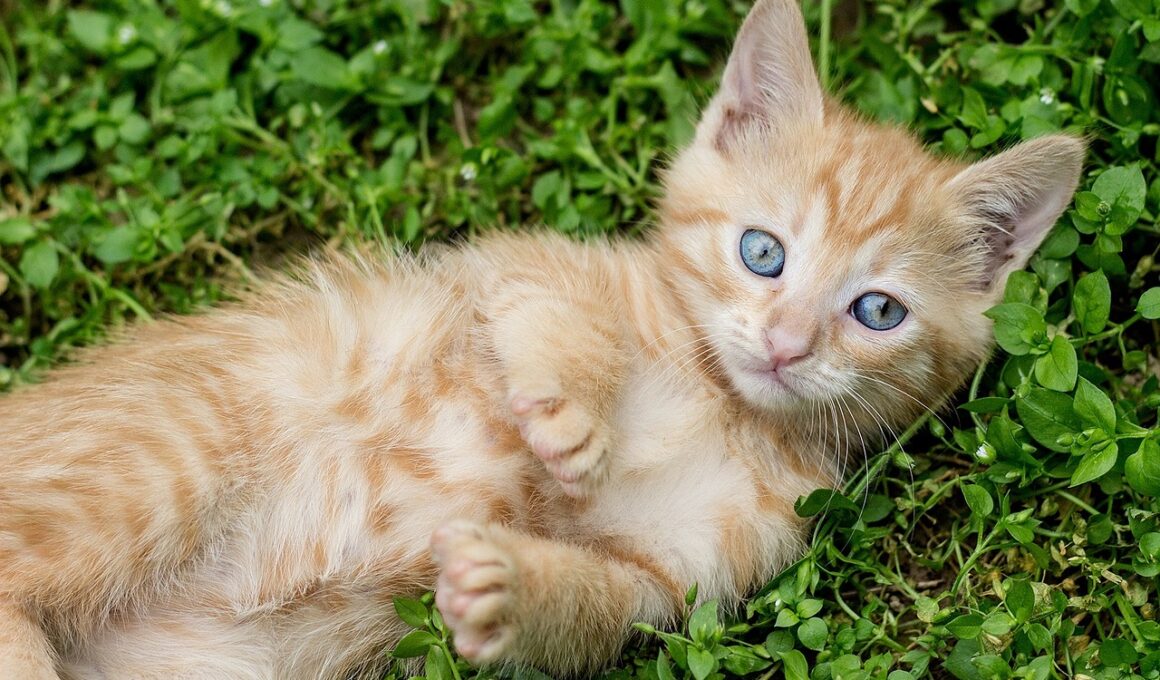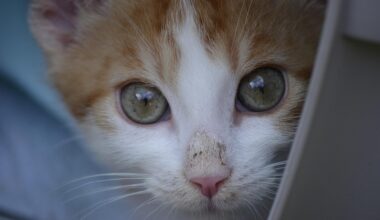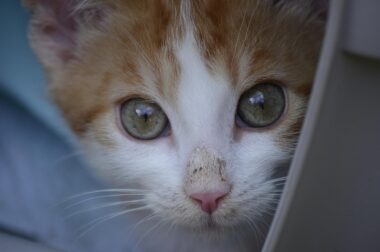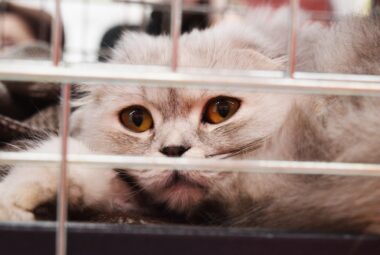Case Studies: Rehabilitation of Cats After Abuse
Cat abuse is a distressing reality that many feline friends endure, challenging the dedication of rescue organizations and foster families. Each rescue case is unique, with distinct backgrounds, behaviors, and rehabilitation needs. The first step in assisting these cats involves understanding their trauma; some cats may have suffered physical abuse, while others faced severe neglect. Abused cats often demonstrate fear, anxiety, and distrust, which can complicate their rehabilitation journey. Timely intervention and a thorough evaluation are crucial to devise tailored rehabilitation plans that respect the cats’ emotional needs. Creating a safe, low-stress environment is essential for healing. Special attention must be given to their dietary needs, socialization channels, and medical care, ensuring they receive comprehensive support. Specialists often engage in gradual exposure techniques, allowing cats to acclimate to their surroundings. Providing nurturing environments where they can play and explore fosters their recovery. Additionally, introducing gentle human interaction can significantly aid recovery. Organization volunteers often work diligently, employing patience and understanding as they help restore the cats’ faith in humanity, ensuring these deserving animals find loving forever homes. Success stories abound, reflecting the resilience of cats and the transformative power of love.
In many cases, rescued cats arrive at shelters displaying serious behavioral issues, including aggression and extreme shyness, stemming from their past traumas. These behaviors create challenges as caregivers try to tame and socialize the cats, making rehabilitation more complex. Additionally, identifying the right approach is imperative, as each cat is a distinct individual with unique needs and fears. The process begins with comprehensive assessments, allowing animal therapists to observe behaviors, triggers, and personality traits. As each cat settles into their new environment, caregivers take extra measures to avoid overwhelming them during the adjustment period. Positive reinforcement techniques play a vital role in rehabilitation, using treats and affection to reinforce desirable behaviors. Furthermore, fostering connections through play helps build trust between the cats and their caretakers. Volunteers may also create safe spaces, where the cats can retreat and feel secure. Environmental enrichment, including toys and scratching posts, assists in reducing stress. Consistency in interactions nurtures collaboration during training, leading to effective rehabilitation outcomes. Documenting progress allows caregivers to adjust techniques as necessary, ensuring that the healing journey remains effective and empathetic.
The Role of Foster Homes
Foster homes serve as essential resources in rehabilitating abused cats, enabling them to experience a safe, loving environment outside of the shelter. Many foster caregivers are volunteers committed to the well-being of the animals, providing not only shelter but also emotional support and companionship. This supportive environment allows cats to flourish in their recovery process, shedding their traumatic past. Foster homes often focus on instilling positive behaviors, reinforcing a sense of safety, and gradually introducing the cat to human companionship. Some rehab strategies include nurturing daily routines, encouraging playful interactions, and allowing the cat to choose when to engage. During this transitional period, the cats adapt to standard household stimuli, helping alleviate fears associated with humans and their environment. Foster families also play a crucial role in bridging the gap between rescue and permanent adoption. Their firsthand experiences with the cats facilitate appropriate matchmaking with potential adopters, ensuring that the right fit is found. Moreover, socialization efforts contribute significantly to preparing cats for adoption, raising their chances of success in loving homes while transforming their overall well-being.
The journey towards rehabilitation extends beyond removing the immediate signs of abuse; it necessitates a holistic approach. Various techniques have been successfully used to guide the cats from the shadows of their trauma back to health and happiness. One effective method is incorporating play therapy; providing stimulating toys and games promotes physical activity while reinforcing bonds with humans. Additionally, individual cats may require behavioral therapy focusing specifically on their anxieties. Identifying trigger points allows caregivers to implement gradual exposure, assisting cats in overcoming fears through systematic desensitization. Establishing routines plays a crucial role in creating stability in their lives, contributing to their overall confidence. Providing resources such as scratching posts and hiding boxes can be effective in catering to their innate instincts. Furthermore, medical assessments are vital to ensure that any physical ailments resulting from trauma are treated swiftly. This commitment to their physical and mental health is what often transforms a frightened cat into a loving companion. Success stories emerge when the right techniques align with the specific needs of each cat, and ongoing support remains prevalent even after adoption.
Success Stories
Success stories mark the culmination of extensive rehabilitation processes, showcasing the remarkable transformations that occur through dedication and care. One heartwarming case involved a calico cat named Luna who was discovered in a dilapidated state. After months of rehabilitation in a foster home, she emerged as a playful and sociable cat, eventually finding a loving forever home. Each story serves as a reminder of resilience and hope; as these cats heal, they also inspire others. Another success features a former FIV-positive cat named Simba, once living in fear and isolation, who found companionship in a multi-cat household. His adoption changed the dynamics of the home, filled with laughter and warmth. These narratives reflect not only individual triumphs but also the effectiveness of the broader shelter community dedicated to progress. Sharing these compelling stories aids in raising awareness about the plight of abused cats while advocating for support. Every effort counts; each successful case contributes to a greater understanding of feline psychology, helping others formulate breakthrough approaches to ensure successful rehabilitation outcomes. This ongoing journey underscores the power of love and commitment in fostering new beginnings.
Stories of transformation not only highlight the resilience of these felines but also stress the collaborative effort between shelters, volunteers, and the community. As success stories circulate, they create a ripple effect, inviting others to become involved in network support. Potential adopters gain insights into the impact of rehabilitation, guiding their decision-making. The process calls for awareness of the serious implications of cat abuse, promoting discussions around prevention and humane treatment. Active community engagement plays a pivotal role in reducing the number of abused and abandoned cats. Fostering supportive environments for both rescued animals and their future families encourages informed pet ownership. Urging advocacy for cat welfare, shelters work tirelessly to promote educational initiatives that provide the tools needed to prevent abusive situations. Furthermore, humane organizations often offer resources to educate the public on responsible pet care and the importance of spaying and neutering. Empowering individuals throughout the community further emphasizes addressing concerns related to animal welfare. Changing perceptions, behaviors, and treatment habits, coupled with a commitment to abuse prevention, ultimately leads to a more humane society for all animals.
The Future of Cat Rescue
Looking ahead, the future of cat rescue and rehabilitation shines brightly with advancing techniques and a more significant collective voice advocating for feline welfare. As awareness continues to grow, new methodologies emerge, emphasizing healing and compassion. Organizations are increasingly embracing innovative approaches through collaboration with researchers and behaviorists to formulate comprehensive rehabilitation strategies. These enhance the techniques used in shelters, focusing on trauma-informed care for all cats. The reliance on data-driven insights expands the effectiveness of interventions. Furthermore, community involvement remains a treasure trove of resources; more individuals recognize the responsibilities of ownership, driving change in public attitudes while bolstering volunteer initiatives. In parallel, social media platforms serve as powerful tools in spreading messages supporting rescue and rehabilitation efforts, fostering connections between advocates and potential adopters. Environmental enrichment becomes essential too; shelters will increasingly invest in creating spaces that mimic home-like conditions. In this era of activism, the continued growth of partnerships with veterinary services and mental health professionals enhances the support systems for both rescued cats and their caregivers. Paving the way for a future where every cat has a chance at love, healing, and belonging.
As we navigate this ongoing commitment to cat rescue, we must remain vigilant, aware of ongoing challenges affecting the well-being of vulnerable feline populations. Educating the public on appropriate socialization techniques can contribute significantly to positive outcomes. It’s evident that raising awareness about responsible pet ownership can help prevent abuse in the first place. Meanwhile, sharing resources and experiences through community workshops and events invites collaboration while fostering deeper connections with both rescued and adoptive families. By encouraging conversations around feline care, we cultivate a more knowledgeable society, advocating for both prevention and healing efforts alike. Furthermore, promoting spay and neuter programs remains crucial; these initiatives lower the number of homeless cats, alleviating the strain on shelters. By focusing on prevention, combined with enhanced rehabilitation tactics, the future looks optimistic for countless cats seeking love and belonging. Ultimately, every transformed life serves as a reminder of the potential for recovery, healing wounds that may never be visible but profoundly impact the invaluable journey of rescue. As communities united, we ensure a promising tomorrow for every cat in need, committing to a sustainable legacy filled with compassion.





